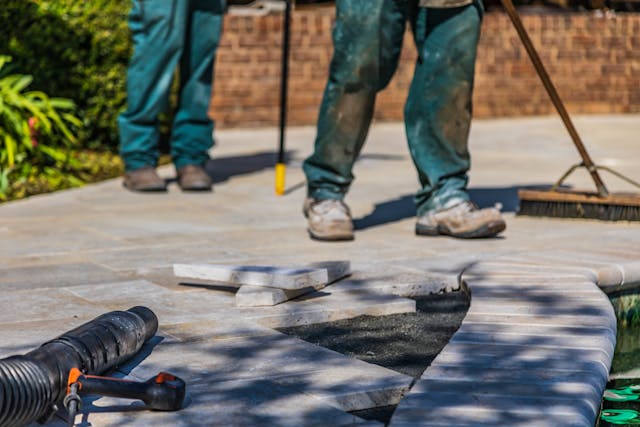When people think of green building, they often picture solar panels, recycled insulation, or energy-saving lights. But one area is easy to forget: the floor outside.
Courtyards, rooftop terraces, plazas, and event spaces all depend on strong outdoor flooring. The materials used here affect not only how the space looks but also how it performs over time.
The right surface can last longer, manage water better, cut waste, and even save energy. Sustainable outdoor flooring combines beauty, strength, and eco-friendly design—making outdoor areas more enjoyable and responsible at the same time.
The Overlooked Role of Outdoor Flooring
Outdoor flooring often gets less attention in green design, but it is replaced more than almost any other feature. Sun, rain, and changing temperatures wear out weak materials fast, leading to waste.
Strong, well-designed flooring lasts longer and supports sustainable building. It is a top choice for architects and facility managers because it improves performance, reduces waste, and helps the planet.
The right flooring also makes spaces safer. It lowers slip risks, improves comfort, and makes outdoor areas easier to use for everyone. When paired with eco-friendly building methods, outdoor flooring becomes more than a surface—it becomes a clear sign of smart, sustainable design.
Sustainability Through Smarter Material Choices
Eco-friendly outdoor flooring often uses recycled parts and low-waste production methods. Modular systems are easy to repair or upgrade without replacing the whole floor. This cuts waste and keeps old materials out of landfills.
Durability is also key. UV-stable plastics, composites, and protective coatings keep flooring strong and looking good for years. The longer a surface lasts, the fewer replacements are needed, which saves money and energy.
Water management adds another layer of sustainability. Permeable surfaces let rain soak through instead of pooling. This reduces runoff, helps groundwater systems, and supports rules for stormwater control.
Designing for Durability and Easy Care
Green flooring must be tough but simple to maintain. Strong surfaces that stay safe and attractive under heavy use are the most sustainable.
Choosing floors with built-in drainage and solid structure lowers cleaning needs and saves water. These savings reduce costs and protect the environment at the same time.
A well-engineered outdoor surface provides consistent traction, noise reduction, and comfort underfoot. Whether in a public courtyard or a rooftop lounge, thoughtful design contributes to both sustainability and occupant well-being.
Real-World Examples of Sustainable Outdoor Flooring
Architects today are choosing greener flooring options for hotels, schools, homes, and event spaces. These materials not only help the planet but also hold up well under heavy use.
One popular choice is modular outdoor flooring. These systems are quick to install and easy to adapt. If part of the floor wears out or the space needs to grow, only that section is replaced. The rest stays in use, which cuts waste and supports a circular economy.
A good example comes from OutdoorFloorSystem. The company builds outdoor floors that combine style, strength, and eco-care. Their products are designed to last through harsh weather while using fewer resources. By working with clients, they create flooring that is both durable and sustainable—without giving up beauty or quality.
Integrating Green Principles into Outdoor Design
Outdoor flooring design can lower its impact on the planet. Builders now look at the full life of a project—from sourcing and shipping to how much energy it uses.
Working with suppliers who share green values helps keep standards high. Using recycled materials, low-VOC glues, and simple packaging cuts the carbon footprint even more.
Outdoor floors can also link with other green systems. Shade structures, rainwater collection, and smart layouts all make spaces more sustainable. Each choice adds to a system that helps both people and nature.
Practical Tips for Sustainable Flooring
- Think long-term cost – Floors that last longer save more money over time.
- Ask for data – Check slip resistance, drainage, and recycled content before buying.
- Buy local – Choosing nearby suppliers cuts shipping pollution and supports local jobs.
- Plan for care – Pick floors that need little cleaning and save water.
- Choose flexible designs – Modular flooring adapts to new needs without full replacement.
Each small step helps cut waste and improve performance.
Conclusion
Outdoor flooring is more than looks or strength. It affects how buildings perform for years. Choosing durable, low-care, and eco-friendly systems helps create safe and green spaces.




